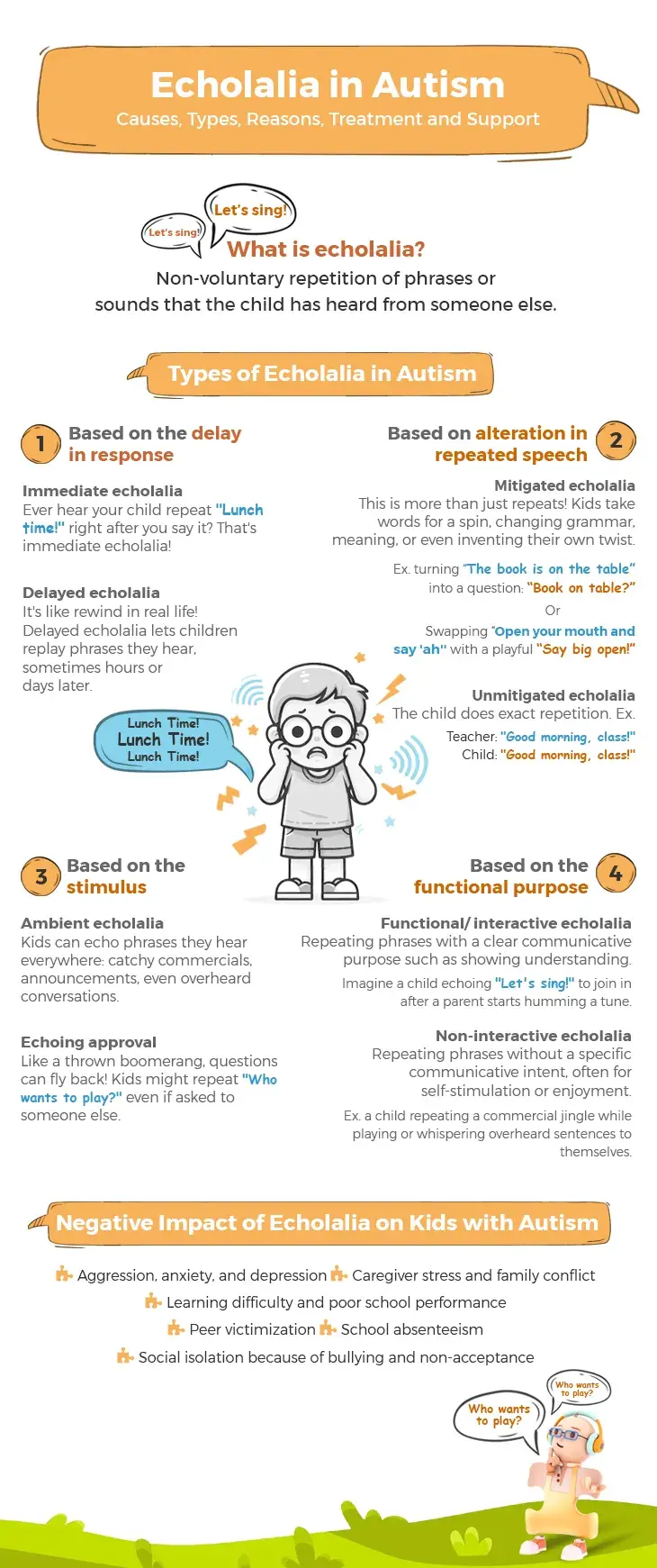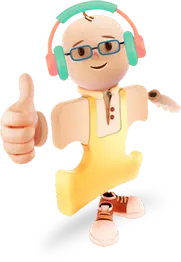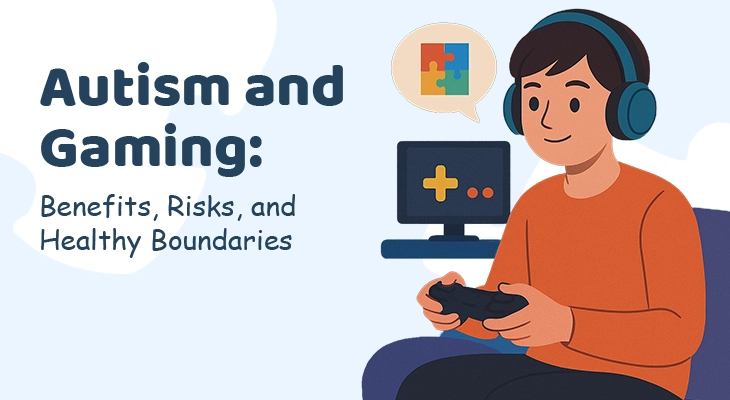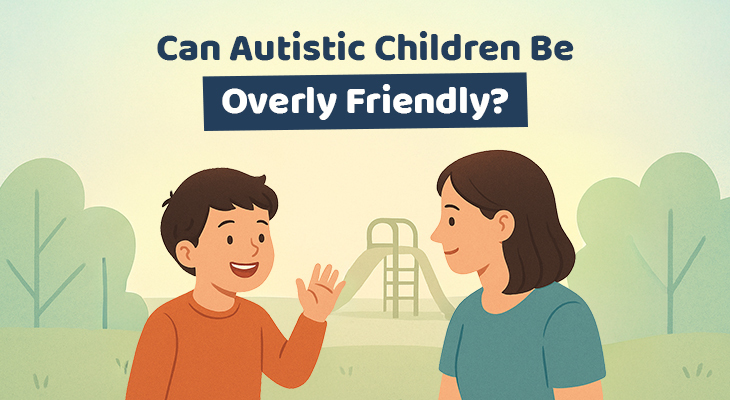Imagine a playful scene: a parent asks their little one, “Do you want milk or juice?” And in response, the child chirps back, “Do you want milk or juice, milk or juice, milk or juice…” That’s a classic example of echolalia in action!
Echolalia can be a normal part of language development in toddlers, but is a salient speech disturbance characteristically described in children with autism spectrum disorder (ASD). As per the National Library of Medicine, approximately 75% of children with ASD exhibit echolalia.[1] Since echolalic repetition is a characteristic, if you have suspicions that your child might be exhibiting other behavior that is also seen in children on the autism spectrum, it is important that you have an evaluation done with your medical professional.
But beyond the echoes, what lies beneath? Can echoing words be a whisper of something more? Dive in with us as we unlock the mystery of echolalia in autism, its complexities, and how it shapes communication in unexpected ways.
Table of Contents
- What is echolalia?
- Is echolalia a disorder?
- What are the symptoms of echolalia?
- Understanding the different types of echolalia
- Reasons children on the autism spectrum use echolalia
- How is echolalia treated?
- Supporting autistic children with echolalia
- Negative impact of echolalia on children with autism
- Conclusion
- Did You Know About Folate Receptor Autoantibodies (FRAAs) and Brain Development?
- References
What is echolalia?
Echolalia comes from two Greek words: “echo” meaning “to repeat,” and “lalia” meaning “speech.” So, echolalia basically means non-voluntary repetition of another individual’s speech. Sometimes it can sound automatic or even robotic, especially in children learning to speak.
Historically, echolalia was described as a meaningless speech disorder. However, recent literature suggests echolalia, for children on the autism spectrum, is a coping mechanism for children with autism to communicate when they cannot produce spontaneous speech. It may have a communicative function (repetition with an apparent meaningful or communicative purpose) or a semi-communicative function (repetition with no clear communicative purpose). [1]
Speech imitation and repetition are a part of normal language development in toddlers. Echophenomena improves over the first two years of life as self-regulation in speech and language develops around the age of 3 years. [1] If echophenomena persists beyond 3 years, one may suspect developmental delay and is also called pathological echolalia.[1] If it persists past age 3 alongside other concerning behaviors, consulting a medical professional for an ASD evaluation is crucial.
Echolalia is also known as echophrasia.

Echolalia, the echoing of prior speech, is a typical characteristic of autism. Long considered meaningless repetition to be avoided, new research suggests that echolalia may in fact be used functionally in autism.
#Echolalia #Autism #AutismAwareness #UnderstandingAutism
Is echolalia a disorder?
Echolalia is a feature of several conditions or disorders rather than being one in and of itself. Echolalia is actually a normal stage of language development in early childhood, but kids typically outgrow it around their third birthday. [4]
Echolalia is a salient speech disturbance characteristically described in children with autism spectrum disorder, but has also been described in several other disorders such as:
- Aphasia
- Autoimmune disorders
- Closed head injury
- Congenital blindness
- Cortico-basal degeneration
- Delirium
- Dementia
- Encephalitis
- Primary familial brain calcification
- Gilles de la Tourette syndrome
- Intellectual disability
- Language delay
- Latah reaction/phenomenon
- Pick disease
- Frontotemporal dementia
- Progressive supranuclear palsy
- Schizophrenia
- Stroke
- Confusional states
- Post Epileptic status
What are the symptoms of echolalia?
The only symptom of echolalia is the non-voluntary repetition of phrases or sounds that the child has heard from someone else.
Understanding the Different Types of Echolalia
Echolalia might sound like simple repetition, but there’s more to it than meets the ear. It is further classified into various types. [2]
- Based on delay in response, echolalia can be:
- Immediate echolalia: Hear it, say it – that’s immediate echolalia in action and can be as simple as a child repeating “Time for lunch!” right after her mom announces it.
- Delayed echolalia: Unlike an immediate echo, delayed echolalia lets phrases linger in a child’s mind, sometimes resurfacing hours or even days later, like a whisper from the past. Imagine a teacher asking, “Who wants to read next?” and the next day, during lunch, the child suddenly echoes, “Who wants to read next?” out of the blue. This is a classic example of delayed echolalia.
- Based on alteration in repeated speech, echolalia can be:
- Mitigated echolalia: Involves the child altering the original phrase in some way, either grammatically, semantically, or creatively, showing some understanding of the meaning and language structure. For example, when the teacher says, “The book is on the table.”, and the child responds with a grammatically changed sentence “Book on table?”. When the doctor says “Doctor: “Open your mouth and say ‘ah’.”, and the child responds “Say big open!” is an example of word substitution.
- Unmitigated echolalia: Here the child repeats the speech in unaltered form, i.e. exact repetition. This could be in various forms such as:
Simple echo:
Teacher: “Good morning, class!”
Child: “Good morning, class!” (Immediate and exact repetition)
Sentence Echo:
Parent: “Let’s brush your teeth before bed.”
Child: “Brush your teeth before bed. Brush your teeth before bed. Brush your teeth before bed.” (Repeated verbatim without change or pause)
Question mimicry:
Doctor: “How are you feeling today?”
Child: “How are you feeling today? How are you feeling today?” (Echoing the question format)
- Based on the stimulus, echolalia can be classified as:
- Ambient echolalia: Repeating phrases heard in the surrounding environment, like on buses, TVs, cars, tablets, phones, etc. Think catchy jingles, bus stop announcements, or overheard conversations. For example, the child mimics the repetitive jingle playing on the TV commercial.
- Echoing approval: Repeating someone else’s question, often as a way of acknowledging or agreeing with it. This can even happen with questions not directed at the person, like a child blurting out “Who wants to play next?” after hearing it being asked to someone else.
- Based on the functional purpose, echolalia can be:
- Functional/ interactive echolalia: Repeating phrases with a clear communicative purpose, like taking turns in conversation, asking for something, or showing understanding. Imagine a child echoing “Let’s sing!” to join in after a parent starts humming a tune.
- Non-interactive echolalia: Repeating phrases without a specific communicative intent, often for self-stimulation or enjoyment. This could involve echoing random sounds, snippets of songs, or phrases heard earlier, not necessarily related to the present situation. Picture a child repeating a commercial jingle while playing or whispering overheard sentences to themselves.

Download Download & share this infograph in your network [Free Download]
Reasons children on the autism spectrum use echolalia
Unsure what a child’s echolalia means? Learning about this special speech unlocks their messages, word by echoed word. Below are some reasons for children on the autism spectrum using echolalia.
Children on the autism spectrum use echolalia because they learn language differently
Neurotypical children learn language by first grasping individual words and then building sentences. But children on the spectrum may take a different approach. Their unique language development path leads them to acquire longer phrases or whole sentences as “chunks” before mastering individual words. These chunks, while grammatically complex, may be beyond their current ability to break down and truly comprehend. Echolalia becomes a stepping stone, allowing them to participate in conversations and explore the sounds and rhythms of language even before they fully grasp the meaning behind each word.
For instance, imagine a child repeating “Close your eyes and say ah” mimicking the doctor’s instructions during a routine checkup. While she’s capturing the overall flow of the phrase, she might not fully grasp the individual words: “close,” “eyes,” “say,” or “ah.” She might even use them incorrectly later, saying “Say ah close eyes” instead of the intended order. Echolalia in this case allows her to participate in the interaction and explore the language, even if her understanding of each word is still developing.
Helping the child break down these larger phrases empowers her beyond mere mimicry. By focusing on individual words like “close” and “eyes,” and demonstrating how they combine to form meaning, we pave the way for the autistic child to say “I need to close my eyes now” with genuine understanding. This shift from echoing to meaningful expression is the heart of supporting a child who uses echolalia. [3]

Autistic kids learn language differently! They grab whole phrases, not just words. Echolalia helps them join in the conversation, explore sounds, & find their own voice.
#UnderstandingAutism #Ecolalia #Autism
Children on the autism spectrum use echolalia to communicate purpose or message
There are also many reasons why children use echolalia for a communicative purpose, such as:
- Expressing wants and needs: For example, a child might say “Can we go to the park?” to ask for an outing, as she’s heard others asking this way before.
- Initiating and maintaining interactions: Repeating familiar game phrases like “Ready, set, go!” or “I spy with my little eye…” can be their way of inviting others to join in and share the fun.
- To draw someone’s attention to something: For example, as a dog barks outside, a child mimics a line from a cartoon, “Uh oh, sounds like someone forgot to feed Scooby Doo!”
- To protest something: Repeating the phrase with a questioning tone and strong inflection to show disagreement. For example, “You DON’T want me to wear those pants?”
- To answer yes: Repeating the question with a questioning tone to seek confirmation and reiterate their desire. For example, “Do I want yogurt? Yogurt?”
Children on the autism spectrum use echolalia to self-regulate sensory stimulation, and internal processing
While some instances are clearly communicative, others might seem less obvious. Here are some situations where echolalia might serve non-communicative purposes:
- Self-soothing or self-regulation: Repeating phrases can offer a sense of comfort and predictability, especially during stressful or overwhelming situations. Imagine a child quietly humming a familiar song to calm their nerves before a doctor’s appointment.
- Sensory exploration: The sounds and rhythms of language can be captivating, and autistic children might enjoy echoing sounds or phrases simply for the sensory experience. Think of a child repeating a catchy jingle from a commercial they saw earlier, just enjoying the way it sounds.
- Practice and preparation: Echolalia can be a way for children to rehearse and internalize language patterns, preparing them to use those words or phrases themselves later. It’s like practicing a song before you sing it in front of others.
- Scripting and routines: Autistic children often find comfort in routine and predictability. Repeating phrases from familiar routines or scripts can help them navigate the world and feel secure. Imagine a child echoing their bedtime story as they get ready for sleep, following the familiar pattern.
- Stimming: Stimming behaviors are repetitive actions or sounds that can provide sensory and emotional regulation. Echolalia can sometimes be a form of stimming, helping the child self-regulate and feel calmer.

More than just repeating! Autistic kids use echolalia for self-soothing, sensory input & internal processing. Not all echoes are for communication!
#AutismAwareness #ecolalia #autism
How is echolalia treated?
Echolalia in autistic children isn’t treated in the traditional sense, but rather supported and guided. Here’s how:
- Uncovering the Why: Identify the type:
Is the echolalia helping the child communicate needs or wants, or is it used for self-soothing or sensory stimulation? This tells us where to best offer support. - Promoting Expressive Language:
- Speech-language therapy: Working with a therapist can build vocabulary, sentence structure, and social communication skills, reducing reliance on echolalia.
- Augmentative and alternative communication (AAC): Tools like picture boards or electronic tablets can offer alternative ways to express needs and ideas.
- Modeling and prompting: Adults can demonstrate clear, concise language and provide gentle prompts to encourage the child to use their own words.
- Interdisciplinary Approach:
- Applied Behavior Analysis (ABA): The goal of ABA is to increase behaviors that are helpful and decrease behaviors that are harmful or affect learning. ABA seeks to understand the reason for speech repetition and respond in a way that helps the child learn appropriate communication skills.
- Supporting Non-communicative Echolalia:
- Sensory strategies: Providing alternative sensory experiences can reduce the need for echolalia for self-soothing.
- Routines and predictability: Consistent routines and predictable environments can lessen anxiety and decrease dependence on echolalia.
Supporting individuals with echolalia
Want to know what your child’s echolalia means? Pay close attention to their behavior and the phrases they use. Following their lead can unlock the message behind their echoes. Following your child’s lead involves:
- Watching & Decoding: Observe what your child’s doing: what catches their eye, what objects they interact with, and their emotions. This context unveils the “why” behind the echolalia.
- Listening for Twists: Pay attention to the words echoed: exact repeats, changed phrases, or sources (TV, school?). What came before the echo? These verbal clues hold hidden meanings and will give you more clarity about what your child is trying to communicate.
- The Power of Silence: Wait for your child to initiate communication after echoing. Avoid rushing in – patience shows you value their message and encourages independent expression.
- Becoming an Interpreter: Once you understand the “why” behind your child’s echolalia, respond in a way that reflects their true message. Think of yourself as their interpreter, helping them bridge the gap between echoes and clear communication.
- Modeling it for them: Offer clear models they can learn from. Use “I” and “me” just like you’d speak from their perspective. It might feel odd, but it provides the building blocks they need to express themselves next time.
Negative impact of echolalia on children with ASD
Echolalia can impair social interactions and learning. It can be a barrier to forming and maintaining social relationships. Echolalia can lead to multiple complications in children with ASD. [1]
- Aggression, anxiety, and depression
- Caregiver stress and family conflict
- Learning difficulty and poor school performance
- Peer victimization
- School absenteeism
- Social isolation because of bullying and non-acceptance
Conclusion
Echolalia, while often misunderstood, is a complex phenomenon with diverse functions and impacts on children, particularly those on the autism spectrum. It’s not a disorder, but rather a stepping stone in their unique language development journey. By understanding its different types, purposes, and potential drawbacks, we can empower children to bridge the gap between echoes and authentic expression.
Remember, every child’s journey is unique. While echolalia can sometimes hinder communication, it also serves valuable purposes like self-regulation, social connection, and even language learning.
Instead of viewing echolalia as a problem to be solved, see it as a window into their world. By offering gentle guidance, creating supportive environments, and celebrating their unique voices, we can help children with echolalia find their own way to express themselves and connect with the world around them.
For information on autism monitoring, screening and testing please read our blog.




